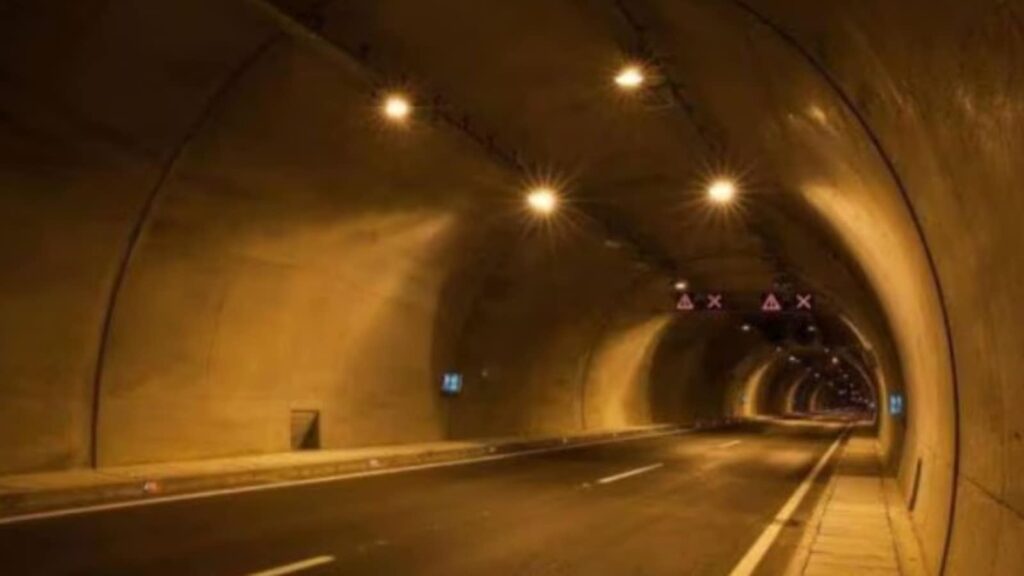In a first of its institutional criticism of the ambitious north-south tunnel road project connecting Hebbal and Silkboard junction, the Bengaluru Metropolitan Land Transport Authority (BMLTA) has flagged several discrepancies in the project.
According to the BMLTA review of the feasibility report of the tunnel road project, accessed by The Indian Express, the transport planning body has stated that the proposed project does not align with the objectives and goals of the approved Comprehensive Mobility Plan (CMP) for Bengaluru.
Further, it stated that the project does not align with either Bruhat Bengaluru Mahanagara Palike (BBMP)’s Climate Action Plan or National Urban Transport Policy (NUTP). In fact, despite several discrepancies, Bengaluru Smart Infrastructure Limited, which is executing the tunnel road project, has gone ahead with global tenders for the project.
BBMP submitted the feasibility study report of the proposed north-south corridor in July 2024 for review and approval by BMLTA. The Directorate of Urban and Land Transport, which serves as the secretariat to BMLTA, conducted a technical review of the proposal, following which 14 technical observations/comments were documented for consideration of BBMP.
According to CMP, it targets a 70 per cent public transport share by 2035; however, tunnel roads encourage car-based commuting, the review noted.
BMLTA noted that BBMP has no prior experience in the state to implement such a large (14.5-metre twin tube) deep tunnel. Instead, BMLTA recommends alternative short-length strategic alignments where such tunnels may play a critical role in improving connectivity of existing road networks.
It also recommended a signal-free connectivity of Outer Ring Road (ORR) at Goraguntepalya junction, signal-free connectivity of ORR between K R Puram and Benniganahalli (to decongest Old Madras Road from Tin Factory to KR Puram) and signal-free connectivity of ORR between Central Silk Board and J D Mara junctions.
Story continues below this ad
BMLTA further recommended considering tunnel configurations for the proposed Peripheral Ring Road (PRR). “Given that the development density along the PRR is relatively low, constructing tunnels here may pose fewer technical challenges. It could also potentially reduce land acquisition costs and open up avenues for private investment, especially as the PRR is already being planned as a toll-based road,” the agency stated.
Lack of scientific assessment
One of the major criticisms is the absence of a scientific travel demand assessment. The agency noted that BBMP failed to conduct origin-destination (O-D) surveys, which are essential for understanding travel patterns and estimating how many commuters would use the tunnel. BBMP’s claim that O-D surveys are only relevant in early-stage transport planning was contested by BMLTA, which noted that a feasibility study itself is an early-stage exercise.
“Without O-D data, traffic shift estimations are speculative, impacting assessments of segment-wise demand, entry/exit point locations, and potential traffic diversion from other projects like metro or suburban rail,” the agency noted.
Further, the project lacks a scientific evaluation of its impact on surface-level roads and junctions, the agency said. The feasibility study omitted turning movement counts (TMCs) and junction-level simulations, failing to assess whether roads and junctions at proposed entry/exit ramps can handle diverted traffic.
Story continues below this ad
“This oversight risks exacerbating surface-level congestion at tunnel access points, potentially undermining the project’s goal of reducing traffic bottlenecks,” BMLTA observed.
BMLTA also pointed out that the study ignores interactions with other major infrastructure projects, such as Metro phases 2A, 2B, 3, and 3A, suburban rail corridors, and the Transit-Oriented Development (TOD) policy. According to BMLTA, by not accounting for these parallel systems, which are designed to address similar commuter demands, the tunnel’s demand forecasts are likely overestimated, leading to flawed planning assumptions.
BMLTA also criticised the project’s reliance on flawed traffic data and analysis. Reported average daily traffic volumes between Hebbal and Mekhri Circle (1,500 to 3,500 passenger car units) were flagged by BMLTA as unrealistically low, with camera-based counts lacking clarity on specific roads and directions.
“The rudimentary forecasting methodology risks overestimating the tunnel’s utility, rendering financial calculations and congestion-relief claims unreliable,” it noted.
Story continues below this ad
Compounding these issues, BBMP’s study neglected geological and seismic risks, providing no details on tunnel depth, seismic risk analysis, or Bengaluru’s geological vulnerabilities, despite the city being in Seismic Zone II with reported active fault lines in Southern Karnataka, BMLTA said.
Environmental and hydrogeological concerns were similarly overlooked, with no Environmental Impact Assessment (EIA) conducted despite the tunnel’s proximity to Rajakaluves and lakes like Hebbal Lake, BMLTA noted.
Additionally, the project underestimates land acquisition needs for entry/exit ramps, ventilation shafts, and impacted buildings, such as those near Silk Board, with no associated cost estimates, leading to an incomplete financial analysis, as per BMLTA.
BBMP’s cost estimates exclude critical components like land acquisition, ecological mitigation, Intelligent Transport Systems (ITS), and surface traffic management, while the financial model fails to assess realistic toll revenue under reduced demand scenarios, it said.
Story continues below this ad
BMLTA also highlighted conflicts with Metro infrastructure, with BBMP identifying only three tunnel-metro conflict points compared to the agency’s identification of 11, including six with existing or proposed Metro lines and five at ramp locations.
Satya Arikutharam, an urban mobility expert, said, “I am not at all surprised by the BMLTA review comments. This is exactly what the city has been trying to say to the Government for the past one year. I hope BMLTA’s sound advice is taken seriously, and the government abandons the unscientific car-only tunnel. Strengthening public transport is the only proven way forward for Bengaluru.
Rajkumar Dugar, convener of Citizens For Citizens forum, told The Indian Express, “The views of DULT, even though couched in nice wording since they are part of the government, strongly vindicate what 90 per cent of Bengaluru feels. In fact, they have asked more questions than we, as concerned citizens, have asked. We hope the Karnataka government will drop this disastrous project and focus fully on completing dozens of projects languishing for years, improving public transport, drainage, cleanliness, etc.”


